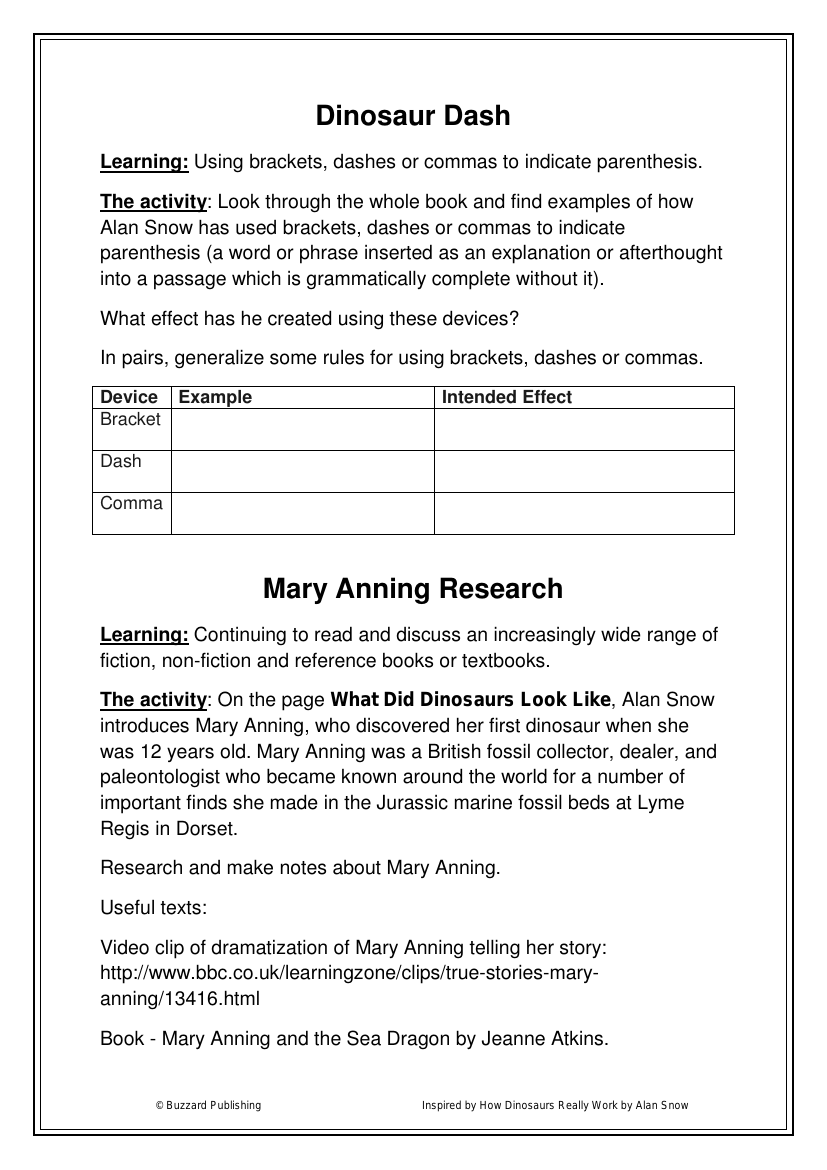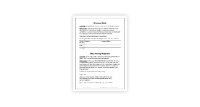Inspired by: How Dinosaurs Really Work - Week 2

English Resource Description
In the engaging book "How Dinosaurs Really Work," Alan Snow employs a variety of punctuation to enhance his writing, particularly focusing on the use of brackets, dashes, and commas to indicate parenthesis. The task for students is to scour the book for examples of these devices in action, noting how each creates a specific effect. Working in pairs, they will explore the nuances of these punctuation marks and develop a set of rules for their usage. Brackets often encapsulate additional information or asides, dashes introduce or emphasize interjections and breaks in thought, while commas can list items or separate clauses for clarity. By examining these examples, students learn how punctuation can alter the rhythm of a sentence and provide clarity or additional context to the reader.
Another activity delves into the fascinating story of Mary Anning, a renowned paleontologist whose discoveries in Dorset have left a significant mark on the field. Students are encouraged to research her life and contributions, drawing on various resources including video clips and books. With this knowledge, they are tasked with retelling Anning's life story, carefully considering the purpose, audience, and form of their writing. This exercise not only pays homage to an important figure in science but also hones the students' ability to adapt their writing style to suit different contexts. Additionally, students will further refine their punctuation skills by examining how Alan Snow uses commas to enhance the readability and precision of his writing, and they will practice crafting their own sentences with a focus on using commas to clarify meaning and avoid ambiguity.
